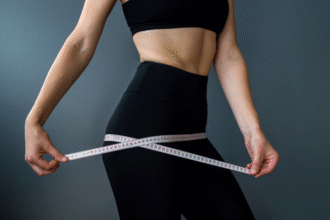Cycling Can Help Lower Blood Lipids in Hyperlipidemia
Cycling is a practical way to combine daily transportation with structured exercise. Because it is rhythmic, predominantly aerobic, and easy to regulate by pace and terrain, regular riding strengthens the heart and lungs, improves circulation, and supports the nervous system. These adaptations enhance metabolic health and help mobilize stored fat, which in turn supports weight reduction and improves lipid metabolism. For people with hyperlipidemia—especially those who are also overweight—consistent cycling is a useful self‑care strategy to help lower triglycerides, raise HDL cholesterol, and contribute to reductions in LDL cholesterol when paired with sound nutrition.
The lipid‑lowering effect of cycling comes from sustained, moderate effort that can be repeated most days. When the intensity is comfortable and breathing is steady, working muscles oxidize more fat and glucose, skeletal muscle becomes more insulin‑sensitive, and enzymes that handle circulating lipids become more active. Over weeks, these shifts contribute to improved fasting lipids and reduced visceral fat. Just as importantly, cycling is easy to weave into daily life as part of commuting or errands, which increases the likelihood of long‑term adherence.
A practical routine is to ride on most days of the week for about 30 to 60 minutes per session at a moderate pace that raises your heart rate and breathing but still allows short sentences of conversation. For many adults on flat roads this corresponds roughly to 15–20 kilometers per hour, though hills, wind, bike type, and individual fitness will change the exact speed; use comfort and breathing as your primary guide. Time can be accumulated across the day—for example, a split commute—so long as each segment is long enough to feel continuous and rhythmic. Progress gradually by extending total time or adding gentle hills as comfort improves.
Safety and comfort determine whether the habit lasts. Choose a bicycle that fits your body and riding purpose, and check brakes, tires, chain, and lights before heading out. Ride on roads or paths with smooth surfaces and clean air when possible, follow traffic rules, and keep a predictable line. A short warm‑up at easy pace helps tissues adapt to effort, and an easy roll at the end allows heart rate and breathing to settle. Hydrate according to thirst, dress for the weather, and dry off and add a layer after rides to avoid getting chilled. It is best to avoid vigorous riding immediately after a large meal; allow time for digestion, and if you are hungry after exercise, choose a light, balanced snack.
Know when to slow down or stop. If you experience unusual breathlessness that does not improve with slowing, chest pain or pressure, palpitations, dizziness, faintness, or abdominal pain, reduce speed or dismount and rest; seek medical evaluation if symptoms persist or are severe. People with cardiovascular disease, hypertension, diabetes, or other chronic conditions should discuss an individualized plan with a clinician, including target intensity, medication interactions, and how to respond to symptoms.
Integrating cycling into daily routines increases consistency. Using the bike for short trips, combining leisure rides with errands, and selecting routes you enjoy make it easier to maintain regular activity without carving out large blocks of extra time. Pairing cycling with sensible nutrition—emphasizing minimally processed foods, appropriate portions, adequate protein, and fiber—enhances lipid benefits. Two brief sessions of resistance training per week can further support body composition and metabolic health by preserving or increasing lean mass.
In summary, cycling is an accessible, joint‑friendly aerobic exercise that supports healthier blood lipids through sustained, moderate effort performed consistently. By choosing comfortable intensities, riding 30–60 minutes on most days, attending to basic safety, and aligning nutrition with health goals, people with hyperlipidemia can use cycling as a reliable tool to improve cardiovascular risk and overall well‑being.







